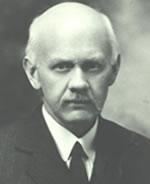Nationality English Role Chemist Name Nevil Sidgwick | Known for valency | |
 | ||
Education Rugby School, University of Tubingen, Christ Church, Oxford | ||
Nevil Vincent Sidgwick FRS (8 May 1873 – 15 March 1952) was an English theoretical chemist who made significant contributions to the theory of valency and chemical bonding.
After a few years at Rugby School, Sidgwick pursued undergraduate studies at Christ Church, Oxford, and a doctorate at the University of Tübingen. He received the MA from Lincoln College, Oxford, in October 1901, and spent almost his entire career in the city of his birth, becoming a Fellow of the college in 1901, and Professor of Chemistry from 1935 to 1945.
Sidgwick became absorbed by the study of atomic structure and its importance in chemical bonding. He explained the bonding in coordination compounds (complexes), with a convincing account of the significance of the dative bond. Together with his students he demonstrated the existence and wide-ranging importance of the hydrogen bond.
In 1927, he proposed the inert pair effect which describes the stability of heavier p-block atoms in an oxidation state two less than the maximum. In 1940 his Bakerian lecture with Herbert Marcus Powell correlated molecular geometry with the number of valence electrons on a central atom. These ideas were later developed into the VSEPR theory by Gillespie and Nyholm.
His works include The Organic Chemistry of Nitrogen (1910), The Electronic Theory of Valency (1927), Some Physical Properties of the Covalent Link in Chemistry (1933), and the definitive The Chemical Elements and their Compounds (1950).
He was made a Fellow of the Royal Society in 1922 and died in Oxford on 15 March 1952.
The Sidgwick Laboratory in the Dyson Perrins Laboratory for organic chemistry and Sidgwick Close in front of the Inorganic Chemistry Laboratory at the University of Oxford were named after him.
